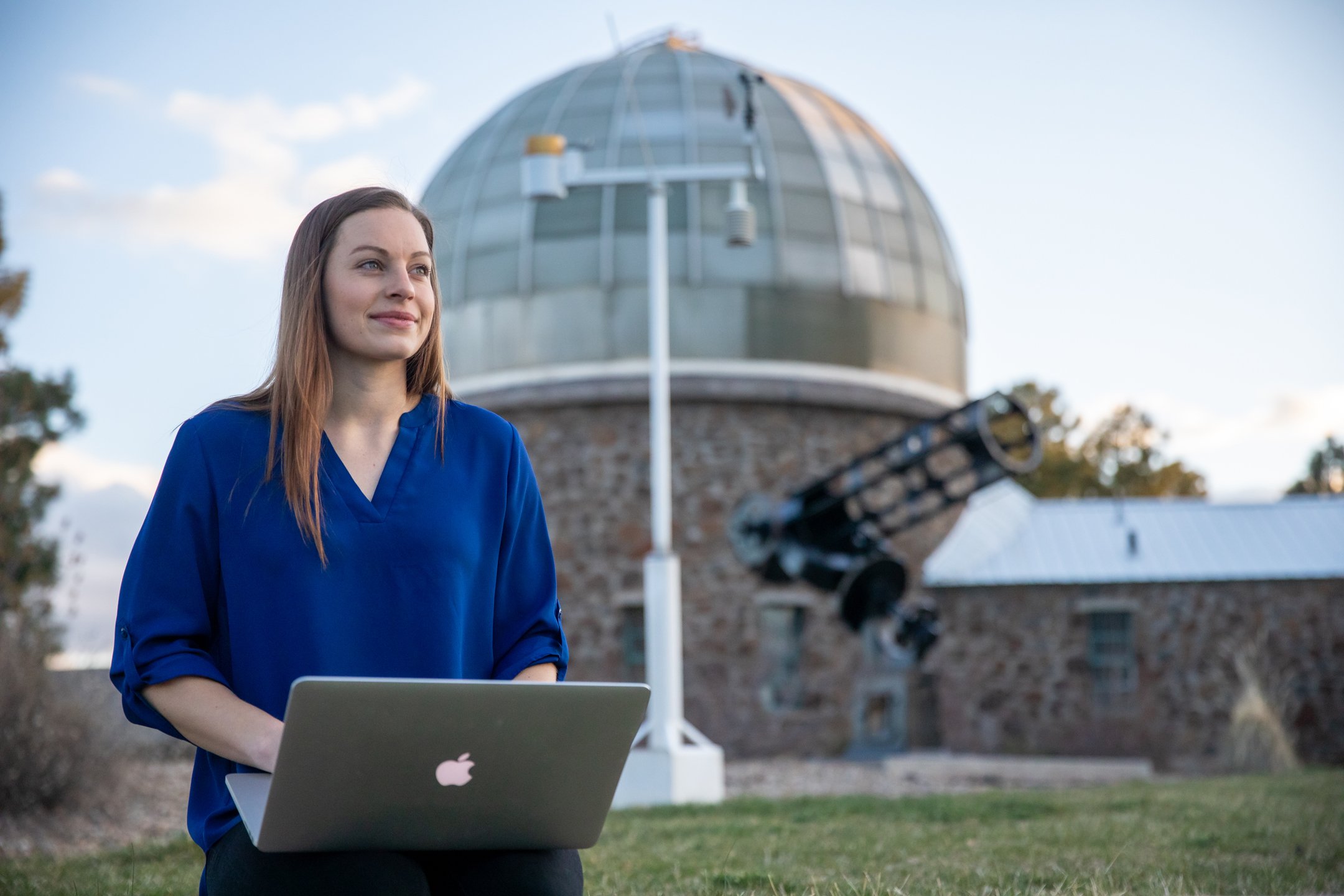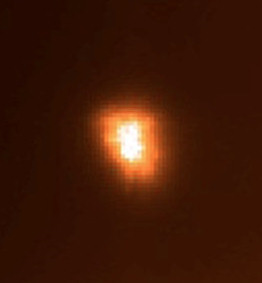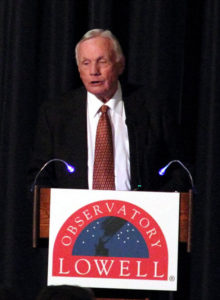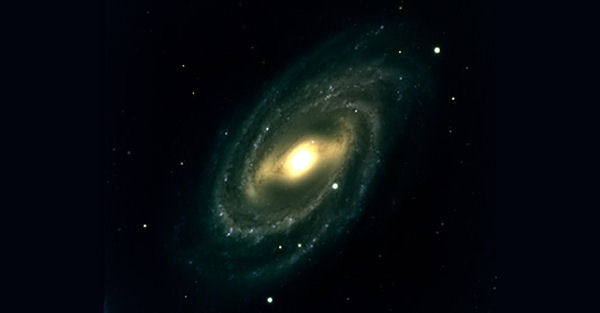Location
Happy Jack, Arizona
Elevation: 7740 feet
Overview
The LDT is the 5th largest optical telescope in the continental United States and one of the most versatile in the world.
Experience the LDT
Discovery Circle Members receive daytime tours of the Lowell Discovery Telescope.
The Swiss Army Knife of Telescopes
The 4.3-meter Lowell Discovery Telescope (LDT) is Lowell Observatory’s flagship research instrument. Its revolutionary instrument cube, which allows for the simultaneous attachment of 5 instruments, makes it one of the most versatile telescopes in the world, inspiring former Lowell Observatory Director Bob Millis to call it the Swiss Army Knife of Telescopes.
Lowell Observatory solely owns and operates the telescope, and has formed scientific partnerships that grant access to scientists from Boston University, the University of Maryland, the University of Toledo, Yale University, and Northern Arizona University. The observatory also maintains a media access and marketing partnership with Discovery, Inc., which funded $10 million of the $53 million cost of the LDT’s construction.
Research with the Lowell Discovery Telescope
Areas of Research
Lowell astronomers and our partners use the LDT for a variety of research, ranging from nearby asteroids to far-distant galaxies.
Asteroids, comets, planets, Kuiper belt objects, double stars, planets around stars other than the Sun, massive stars, dwarf galaxies, colliding galaxies, and more are all fair game.
The LDT's Research Instruments
Tell Me More!
Before astronomers could explore the heavens with the LDT, engineers had to first build it, test it, and get it into prime working condition.
The LDT employs what is called a Ritchey-Chrétien optical design. Light enters the telescope through the dome slit and is reflected off the 4.3-meter primary mirror, which is figured into a concave hyperbola with a precision of 50 to 75 nanometers. (For comparison, a human hair is about 80,000 – 100,000 nanometers thick.) The light then reflects off the 1.4-meter secondary mirror, which is a convex hyperbola. It returns through a hole in the center of the primary mirror and arrives at the focal plane, where the light is sent to the selected instrument.
The primary mirror of the LDT measures 4.3 meters (14 feet) across and only 10 centimeters (4 inches) thick and weighs 6700 pounds. It must be removed every 5 years to receive a new coating of aluminum. Besides this, it must be cleaned monthly so that the surface is maximized for collecting light from space.
The lens is mounted to a massive telescope frame lined with electrical wires and tubes for feeding super-chilled liquids to the instruments so they operate properly. The telescope is operated by a network of computers and anchored into the ground, with the entire assembly housed by a 7-story dome.
All this technology needs constant care, and Lowell maintains a team of engineers that daily monitor operations and make repairs as needed, so the telescope stays in optimal working condition.
It’s a long way from early engineering drawings to photons reflecting off the mirror and hitting the detector. Lowell broke ground for the new telescope on July 11, 2005. Half a dozen years later, in September 2011, astronomers recorded the first image from just the primary mirror, using a small test camera mounted where the secondary mirror would eventually go. This “zeroth light” test produced a seemingly plain image of a star, not in very good focus and distinctly not round. It’s not great by the standards of a fully-commissioned telescope, but it was a very encouraging result for a completely untested, point-and-shoot first try.

“First light” is a telescope’s debut: the dome shutter and mirror cover are open, the detector is ready to go, and all systems are up and running. It reveals an initial demonstration of the quality of the telescope’s optics and overall system performance, so it is one of the most significant milestones for a facility like LDT.
First light for the Lowell Discovery Telescope occurred on April 3, 2012, just a few months after the secondary mirror was installed (January 2012).

A milestone like first light deserves a proper party, and on July 21, 2012, some 730 guests joined Lowell staff at Flagstaff’s High Country Conference Center to celebrate the completion of a ten-year journey. The featured speaker for the evening was Neil Armstrong. Nearly a half century since visiting Flagstaff for astronaut geology training, Armstrong gave an inspiring keynote address, tying together his own voyages of discovery with the ones LDT was now poised to make.
The first light image taken on April 3, 2012, was of barred spiral galaxy M109.

The LDT project got underway in 2003, when Discovery founder and former CEO John Hendricks proposed what would become a $10 million gift to Lowell Observatory from what was then called Discovery Communications (now Discovery, Inc.), with a further $6 million coming from his foundation. This gift proved crucial to funding the $53 million project, and in return Discovery received naming rights to the telescope.
When the initial agreement between Lowell and Discovery ended in 2017, leaders from the two organizations developed a new agreement that included changing the name of the telescope for clarity. As Lowell Director Jeff Hall explains, “The name Lowell Discovery Telescope makes clear that Lowell Observatory is its owner and operator, while the word Discovery takes on a fun double meaning. It recognizes the generous support gift from Discovery that enabled us to build the telescope and emphasizes the observatory’s tradition and mission of astronomical discovery.”